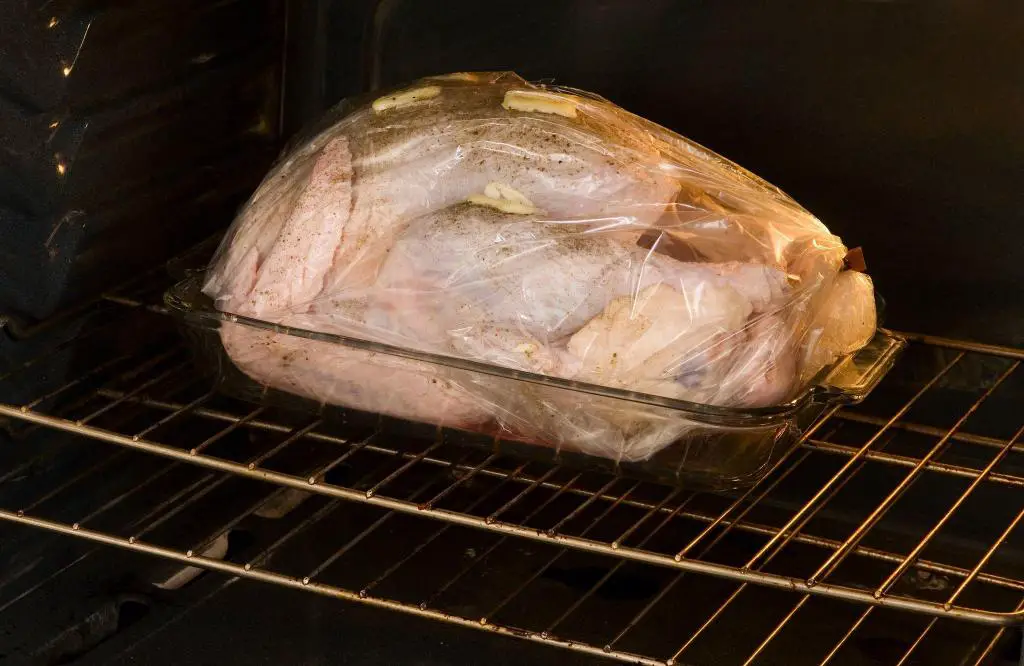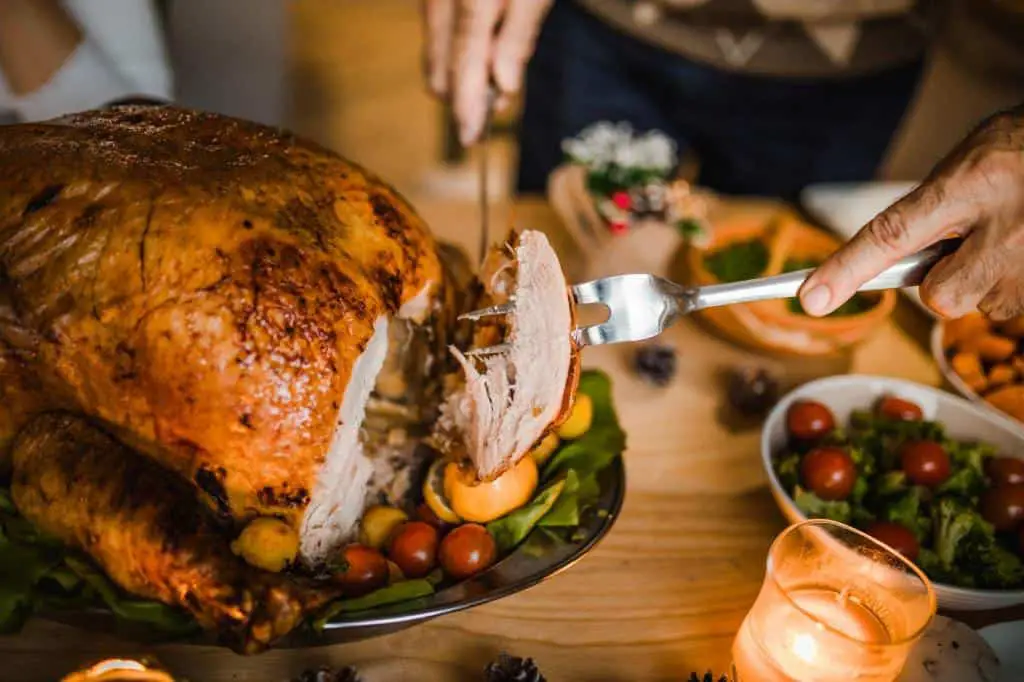How to Tell if Ground Turkey Is Undercooked? Is It Safe to Eat?

Welcome to the tantalizing world of culinary exploration, where ground turkey takes center stage as a lean and versatile protein source. While your taste buds eagerly anticipate the savory delights it promises, there’s a vital question that demands your attention: How do you tell and be certain that the delectable ground turkey dish before you is perfectly cooked and safe to consume?
In this article, we’ll delve into the importance of properly cooked ground turkey, the risks associated with undercooked meat, and how to identify signs of doneness. Let’s get started on your journey to safer and more delicious meals.
Join us as we navigate through textures, temperatures, and tantalizing aromas, ensuring that each meal gracing your table is not just a matter of flavors but also a matter of health. Let’s dive into the realm of culinary expertise and emerge as discerning connoisseurs of both taste and well-being.
Understanding the Risks of Undercooked Ground Turkey
Understanding the complexities of recognizing the signs of undercooked ground turkey is critical. Ingesting undercooked poultry, ground turkey included, unveils a worrisome prospect: exposure to harmful bacteria like Salmonella, Campylobacter, and E. coli.
These insidious microorganisms frequently lurk within raw or undercooked meat, poised to trigger unsettling bouts of foodborne ailments. These bacteria can cause symptoms such as nausea, vomiting, diarrhea, and abdominal pain. Imagine the discomfort that can arise from consuming a seemingly delectable dish that conceals within it the potential seeds of illness.
Protecting you and your family from these potential health risks requires careful observation. You must ensure that ground turkey is thoroughly cooked to the recommended internal temperature. As a result, understanding proper cooking techniques, such as using a food thermometer to determine the correct internal temperature, acts as a sentinel against these lurking dangers.
Remember that an extra minute on the stove can translate into an added layer of safety. The process of achieving a perfectly cooked ground turkey involves more than just taste; it also ensures the importance of proper cooking and being attuned to the potential risks of undercooked poultry.
Signs of Undercooked Ground Turkey

A telltale sign of undercooked ground turkey is its appearance, texture, consistency, inside temperature, and other things. It’s essential to recognize the signs of undercooked ground turkey to avoid falling ill.
1. Color and Texture
Properly cooked ground turkey should have an even brown color throughout. Undercooked meat might appear pinkish, and the texture could be somewhat soft and mushy. As it cooks, the meat’s proteins denature and firm up, so a lack of firmness is a clear indicator of undercooking.
2. Internal Temperature
Using a food thermometer is one of the most reliable methods to determine if your ground turkey is cooked to a safe internal temperature. The USDA recommends cooking ground turkey to an internal temperature of 165°F (74°C). Insert the thermometer into the thickest part of the meat to get an accurate reading. If it hasn’t reached the recommended temperature, it’s undercooked.
3. Juices
When cooking ground turkey, pay attention to the juices that come out. If the juices are clear, the meat is likely fully cooked. However, if the juices are pink or cloudy, the meat might be undercooked, and you should continue cooking it until the juices run clear.
4. Texture and Consistency
Undercooked ground turkey can feel slimy to the touch. Properly cooked meat should have a consistent, slightly springy texture. If the meat feels sticky or slimy, it’s a sign that it needs more time in the oven.
Safe Cooking Practices for Ground Turkey
Cooking ground turkey isn’t rocket science, but it does require attention to detail. To ensure your meal is both delicious and safe, follow these steps:
- Preparation: Wash your hands and any surfaces that come into contact with raw ground turkey to prevent cross-contamination.
- Internal Temperature: Invest in a meat thermometer to accurately gauge the internal temperature of your ground turkey. As already mentioned, ground turkey should be cooked to an internal temperature of 165°F (73.9°C) to eliminate any harmful bacteria.
- Cooking Time: Cooking times can vary based on the recipe and preparation method. Be sure to follow the specific instructions provided in the recipes.
- Resting Period: After cooking, let the ground turkey rest for a few minutes. This allows the residual heat to continue cooking the meat, ensuring it reaches the recommended temperature throughout.
Internal Temperature Guidelines for Cooking Ground Turkey
To take the guesswork out of cooking ground turkey, refer to these internal temperature guidelines:
| Meat Doneness | Internal Temperature |
| Rare | 125°F (52°C) |
| Medium Rare | 135°F (57°C) |
| Medium | 145°F (63°C) |
| Medium Well | 150°F (66°C) |
| Well Done | 160°F (71°C) |
For ground turkey, aim for an internal temperature of at least 165°F (73.9°C) to ensure it’s safe to eat. As it cooks, the color of the meat should change to a light gray-brown, and the texture should become more consistent.
Remember, these guidelines apply not only to ground turkey but also to ground chicken and other poultry products.
Ensuring Food Safety: Storage and Handling of Ground Turkey
The journey to safe consumption begins long before the cooking process. Properly storing and handling raw ground turkey can significantly reduce the risk of bacterial growth and contamination. Here’s what you need to know:
- Storage: Store raw ground turkey in the coldest part of your refrigerator at a temperature below 40°F (4.4°C). If you don’t plan on using it within a couple of days, consider freezing it.
- Freezing: To freeze ground turkey, place it in an airtight container or resealable freezer bag. Label it with the date to keep track of freshness. When you’re ready to use it, thaw it in the refrigerator or microwave, never at room temperature.
- Thawing: When thawing ground turkey, opt for safe methods like refrigeration or using the defrost function on your microwave. This prevents the meat from entering the “danger zone” (40°F to 1400°F),) where bacteria multiply rapidly.
- Cross-Contamination: Prevent cross-contamination by keeping raw ground turkey separate from other foods. Use different cutting boards, utensils, and plates for raw and cooked foods. Wash your hands, utensils, and surfaces thoroughly after handling raw meat.
Related: Why Does Refrigeration Impact the Taste of Previously Cooked Poultry?
Expert Tips for Cooking Perfect Ground Turkey
If you’re looking to elevate your ground turkey cooking game, listen to the experts. Culinary enthusiasts recommend the following to ensure a delectable and safe meal:
- Seasoning: Don’t be shy with the spices! Ground turkey can be relatively mild in flavor, so feel free to experiment with a variety of seasonings to enhance the taste.
- Cooking Methods: Opt for cooking methods like sautéing, baking, or grilling to retain moisture and flavor. Avoid high heat that might result in overcooking or dryness.
- Balancing Safety and Flavor: While achieving the perfect internal temperature for safety is paramount, you can maintain juiciness by not overcooking. Use a meat thermometer to hit the magic number—165°F (73.9°C)—without going beyond.
- Flavorful Creations: Ground turkey is versatile, so let your creativity shine. From burgers to meatballs and stir-fries, the possibilities are endless.
Is It Safe To Eat Slightly Pink Ground Turkey?
It is generally safe to eat slightly pink ground turkey as long as it has been cooked to a minimum internal temperature of 165 degrees Fahrenheit (74 degrees Celsius).
Here are some key points to consider:
- Color Variation: Turkey meat can remain pink even after reaching the safe cooking temperature of 165 degrees Fahrenheit (74 degrees Celsius) . This is especially true for smoked turkey, which always has a pink color.
- Texture and Smell: If the ground turkey appears pink but has been cooked to the proper temperature, you can also consider the texture and smell. If the meat feels slimy, sticky, or has an off odor, it may indicate spoilage and should be discarded.
- Exceptions: If the ground turkey was smoked before being ground, it may still have a pinkish color, but it will differ from the raw pink color.
However, it’s important to ensure that the internal temperature reaches 165 degrees Fahrenheit (74 degrees Celsius) to eliminate any potential bacteria
Debunking Myths About Ground Turkey Doneness
Let’s set the record straight on some common misconceptions:
- The Color Myth:
Myth: Ground turkey must be completely white to be safe.
Fact: The internal temperature is the ultimate indicator of safety. A slight pink hue is okay as long as it reaches 165°F (73.9°C).
- Texture Tale:
Myth: Undercooked ground turkey is always mushy.
Fact: While undercooked meat can have an unusual texture, don’t rely solely on this factor. The thermometer is your best friend.
- Myoglobin Mystery:
Myth: Pink meat is a sign of blood or rawness.
Fact: The protein myoglobin can give cooked meat a pinkish color. Cooking it at the right temperature ensures safety.
- Microwave Magic:
Myth: Microwaving ground turkey is unsafe.
Fact: You can microwave ground turkey, but follow the same rules for temperature to ensure safety.
- Risk of Slight Undercooking:
Myth: Slightly undercooked ground turkey is harmless.
Fact: Even a small amount of undercooked meat can contain harmful bacteria. Always strive for thorough cooking.
By understanding the risks, practicing safe storage and handling, embracing expert advice, and debunking myths, you’re equipped to enjoy ground turkey that’s not only delicious but safe for you and your loved ones. Happy cooking!
Conclusion
Cooking ground turkey to perfection isn’t just about taste; it’s about safety too. By understanding the risks of undercooked meat, learning to identify signs of doneness, and following safe cooking practices, you can enjoy a meal that’s both flavorful and free from health hazards.
Your health is paramount, and knowing how to identify undercooked ground turkey is a skill that can protect you and your loved ones from foodborne illnesses. By paying attention to signs of undercooked poultry, like ground turkey’s color when cooked and its texture, as well as observing the juices that escape from the meat, you can confidently determine if your meal is safe to consume. Detecting undercooked meat goes beyond taste; it’s about ensuring your gastric health.
Cooking ground turkey to perfection isn’t just about taste; it’s about safety too. By comprehending the risks of consuming undercooked poultry and understanding how to tell if ground turkey is cooked, you equip yourself with essential knowledge. Utilizing a food thermometer and adhering to proper cooking guidelines will become your allies in this culinary quest. When you consider the potential for foodborne illnesses from undercooked meat, the importance of these precautions magnifies.
Utilizing a food thermometer and following proper cooking guidelines will further ensure that your meals are not only delicious but also free from harmful bacteria. Remember, when in doubt, cook it out—your taste buds and stomach will thank you later!
So, the next time you’re in the kitchen, keep these ground turkey texture guidelines when cooked properly in mind and savor your culinary creations with confidence.
FAQs on Risks of Consuming Undercooked Ground Turkey
Why does ground turkey sometimes stay pink after cooking?
The pink color might persist due to the presence of myoglobin, a protein that can retain color even when cooked.
Can I rely solely on color to determine if my ground turkey is cooked?
No, relying on color alone isn’t enough. Use a meat thermometer to accurately gauge the internal temperature.
Is it safe to cook ground turkey in a microwave?
Yes, you can use a microwave, but ensure the internal temperature reaches 165°F (73.9°C) uniformly.
What if I accidentally ate undercooked ground turkey?
If you experience symptoms like nausea, diarrhea, and abdominal pain, consult a healthcare professional. It’s important to address potential foodborne illnesses promptly.






